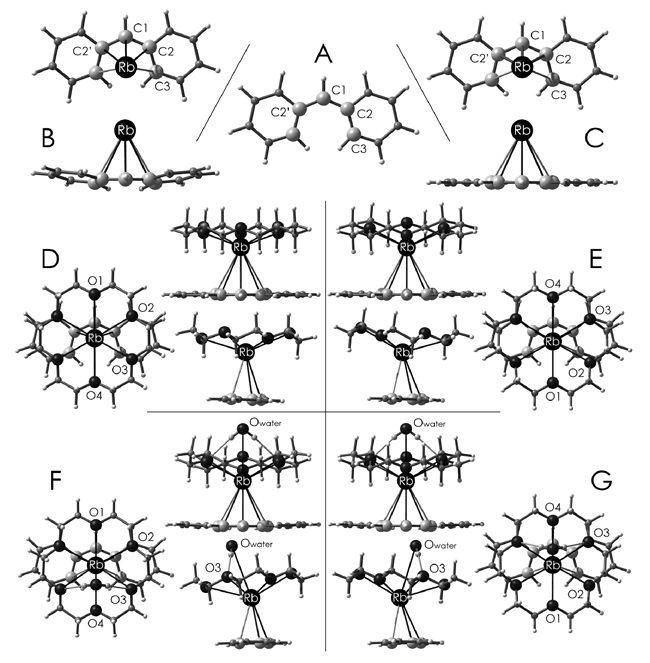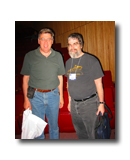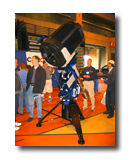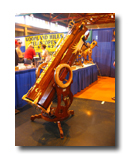The June Extraterrestrial Eye Candy Issue
Just in time for the summer, this month's message is going to be heavy on the visuals, including the 10,000 year-or-so gamut of civilization's ability to see beyond our own atmosphere, from the naked eye in Pulaski to the Hubble pixel-full out of JPL.
Hubble's Take On Spiral Galaxy M81
…in case anyone ever needs to justify a Hubble repair. The full-sized image of M81 is absolutely stunning. I've provided the link below to the site reporting the view (including several other images) and have also snuck the full-sized version as a direct link (just click the image for the full-sized, 25 MB (!) image).
From the website: "This new image of the nearby spiral galaxy Messier 81, taken by NASA's Hubble Space Telescope, shows stunning detail in a galaxy that resembles the Milky Way in many ways. This color composite was assembled from images taken in blue, visible, and infrared light."
Let's all urge our own Stu Forster to spend a few hundred million dollars and see what he can do.
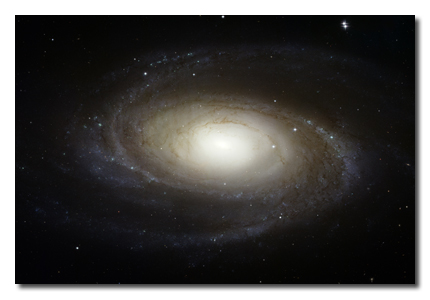
Credit: NASA, ESA, and the Hubble Heritage Team (STScI/AURA).
Click HERE for more information.
The Carina Nebula
Another stunner of the Carina Nebula. If this is not a real image, then it's art from the world's foremost authority on Photoshop (a legitimate possibility if you're convinced we never landed on the Moon). In the interest of retaining a copy of the press release for our records (the great beauty of government-funded research is that, by our paying into the system, we always have this work for free download so long as we can find it), the description of this figure is provided below. Click on the image to be taken to the current webpage holding this image.
From the website: "In celebration of the 17th anniversary of the launch and deployment of NASA's Hubble Space Telescope, a team of astronomers is releasing one of the largest panoramic images ever taken with Hubble's cameras. It is a 50-light-year-wide view of the central region of the Carina Nebula where a maelstrom of star birth – and death – is taking place.
Hubble's view of the nebula shows star birth in a new level of detail. The fantasy-like landscape of the nebula is sculpted by the action of outflowing winds and scorching ultraviolet radiation from the monster stars that inhabit this inferno. In the process, these stars are shredding the surrounding material that is the last vestige of the giant cloud from which the stars were born.
The immense nebula contains at least a dozen brilliant stars that are roughly estimated to be at least 50 to 100 times the mass of our Sun. The most unique and opulent inhabitant is the star Eta Carinae, at far left. Eta Carinae is in the final stages of its brief and eruptive lifespan, as evidenced by two billowing lobes of gas and dust that presage its upcoming explosion as a titanic supernova.
The fireworks in the Carina region started three million years ago when the nebula's first generation of newborn stars condensed and ignited in the middle of a huge cloud of cold molecular hydrogen. Radiation from these stars carved out an expanding bubble of hot gas. The island-like clumps of dark clouds scattered across the nebula are nodules of dust and gas that are resisting being eaten away by photoionization.
The hurricane blast of stellar winds and blistering ultraviolet radiation within the cavity is now compressing the surrounding walls of cold hydrogen. This is triggering a second stage of new star formation.
Our Sun and our solar system may have been born inside such a cosmic crucible 4.6 billion years ago. In looking at the Carina Nebula we are seeing the genesis of star making as it commonly occurs along the dense spiral arms of a galaxy.
The immense nebula is an estimated 7,500 light-years away in the southern constellation Carina the Keel (of the old southern constellation Argo Navis, the ship of Jason and the Argonauts, from Greek mythology).
This image is a mosaic of the Carina Nebula assembled from 48 frames taken with Hubble Space Telescope's Advanced Camera for Surveys. The Hubble images were taken in the light of neutral hydrogen. Color information was added with data taken at the Cerro Tololo Inter-American Observatory in Chile. Red corresponds to sulfur, green to hydrogen, and blue to oxygen emission."
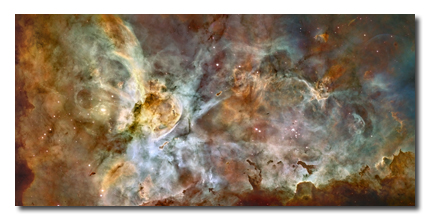
from hubblesite.org
Click the image for more information.
The Official HiRISE Site
The last of the eye candy in this series is the official website of HiRISE, the camera onboard NASA's Mars Reconnaissance Orbiter. This site is a repository of the most detailed images of Mars ever assembled, provided by the "most powerful camera ever to leave Earth." We can only hope that NASA or one of the international space agencies puts that moniker to the test in the near future.
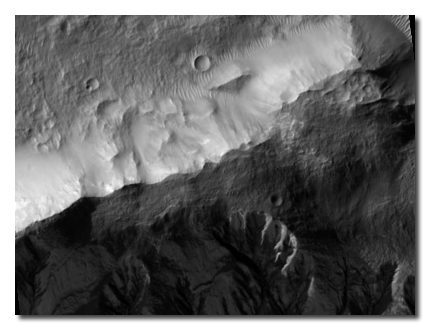
from hirise.lpl.arizona.edu
Click the image for more information.
"Fathers Of The Zodiac Tracked Down"
This was a rather interesting find, sent to the SAS Board by our own John McMahon. That the professor would be the first to report this news is of no surprise, especially to anyone who's had the pleasure of hearing one of his lectures on ancient astronomy. Despite how much more we know about the heavens above than ever before, we still rely on a stellar organization (that we call "The Constellations") that goes back several millennia. The mythology and magic may change, but the bookkeeping remains ever the same. As an interesting aside, a number of comment posts to various blogs reporting this work were rather put off by the feature of an astrology-related study. Such comments are multi-dimensionally ridiculous, both because the Zodiac has been the basis of our entire understanding of our place in the universe since the Assyrians (if not before) began to use the night's sky to mark out significant events of each year (our "Dog Days" of summer have nothing to do with Goofy and Pluto, but the prominence of the star Sirius (the "Dog Star") in the summer sky) AND, and this is always interesting to note, astronomy was once the "quack" science to the finely-honed practice of astrology. Scientific progress, like any assembly process, is entirely a function of the tools one has available at the time.
Unfortunately, the Nature press release reporting the article reporting this finding has reportedly disappeared from the Nature free-info site, so what follows is all I have to, er, report.
From the press release: "Using modern techniques – and some rocks – a US astronomer has traced the origin of a set of ancient clay tablets to a precise date and place. The tablets show constellations thought to be precursors of the present-day zodiac.
The tablets, known collectively as MUL.APIN, contain nearly 200 astronomical observations, including measurements related to several constellations. They are written in cuneiform, a Middle-Eastern script that is one of the oldest known forms of writing, and were made in Babylon around 687 BC.
But most archaeologists believe that the tablets are transcriptions of much earlier observations made by Assyrian astronomers. Just how much older has been disputed – the estimates go back to 2,300 BC.
Now Brad Schaefer, an astronomer at Louisiana State University in Baton Rouge, says he has dated the observations to 1,370 BC, give or take a century."
Pitch Black Stirring The Imagination
Yet another place on Mars for people to make unsubstantiated predictions about life. As a brief aside, as a practicing scientist with his eyes to the sky and head in the clouds, I watch the NASA news conferences reporting major findings from all of the space missions (the Mars Rover conferences being among the best for this) and commend the self-restraint of the scientists at the table reporting the "likely evidence" and "strong circumstantial indicators" for this-or-that feature or phenomenon. One might image these same people playing the lottery, only to have their numbers drawn, yet still saving the celebration for the first arrived check despite knowing that check is in the mail.
Holes! Real, round, pitch-black holes in the ground! There is very little to report about the specifics of these features on the Martian surface, only that some geological activity or another has yielded the kinds of pictures where one would otherwise be convinced that someone has removed a circle for no reason. The hole in the top picture is the most publicized of the bunch (couldn't you tell?), but at least seven such features have been detected, making them the "Martian Seven Sisters" to complement the brightest stars of the Pleiades.
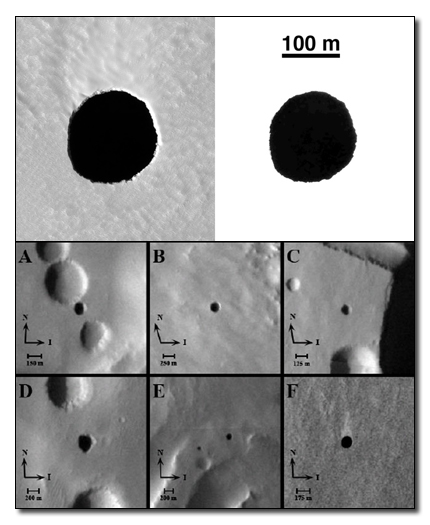
from hirise.lpl.arizona.edu
Click the image for more information.
Highlights From The Dague NEAF 2007 Report
When it comes to fiscal responsibility, virtually no habit costs less to begin than astronomy. From the lunar calendar to the seven liberal arts, the night's sky was something prince and pauper all had in common. If you're frugal and patient, amateur astronomy can be an absolutely free past time to last a lifetime.
And with that, I'm reposting a few pictures Observatory Director Raymond Dague took at NEAF 2007, the North-East Astronomy Forum. Perhaps the only thing keeping anyone from purchasing a scope at these festivals is the inability to get the case into the sub-compact hybrid that got them to the auditorium in the first place. The images, from left, are (1) Ray (left) with Brother Guy J. Consolmagno, S.J., planetary scientist at the Vatican Observatory, author of the best-selling "Turn Left at Orion," and presenter at Le Moyne last year, (2) an absolutely massive Schmidt-Cassegrain (note the position of the eyepiece!) and (3) a very ornate telescope that, I suspect, would never leave the owner's living room.
Click an image for a larger version.
Amassed Astronomy Media Part 4: Month-At-A-Glance
Let's face it. In a place like Central New York, where the number of "good viewing" nights almost add up to a month, planning around major astronomical events can be an exercise in futility. I've resigned myself to a number of web-based viewing sessions this year and it's only half-over. Alternatively, sometimes you walk out your front door, see as perfect cloudless night, and simply don't know where to start to maximize your Big Bang for your buck. For those of you that are members of the Syracuse "I want to know what's up right now and I want to know NOW!" Society, I suspect that the following five links will serve you well. These five pages provide lists of major events, important stellar features, what planets are out and about, etc., all in a span of only a few scroll wheels. In one case, a free pdf book of the year's viewings, always handy for browsing in the 4:00 pm hour of a Friday afternoon.
www.skyandtelescope.com/observing/ataglance
This is Sky and Telescope's "This Week's Sky at a Glance." The descriptions are broken down by day with very clear illustrations provided for interesting multi-day phenomena AND each planet is accounted for, be it visible or not (yes, even Pluto still). The further information links take you to, as one might guess, subscription information. Those in the SAS that have taken advantage of their discount subscription to Sky+Tel are already ahead of the game, as the monthly issues include much of the information on this quick-list.
www.space.com/spacewatch/sky_calendar.html
This is the monthly sky calendar from Space.com, quite possibly the New York Times meets Drudge Report of all things space-related (including regular stories and a very rapid response system to significant findings in space science and technology). The page includes the days for the Moon Quarters and major highlights at top, followed by day-by-day breakdowns for significant astronomical events (which includes icons to let you know bino-friendly vs. scope-friendly vs. eye-friendly viewing opportunities).
hubblesite.org/explore_astronomy/tonights_sky
A monthly multimedia event from hubblesite.org. This isn't just a list of events, but a complete narrated presentation of sky views, hints of how and where to find objects, and some basic physics all in one. Polished as one would only expect from the web face of the solar system's most important camera.
www.bbc.co.uk/science/space/myspace/nightsky/observingnotes.shtml
Straight from the BBC, this website would be your "5 hour warning" for astronomical events if it were a radio show. As expected, major highlights from above, sky maps, and breakdowns of each visible planet for the month. This site's also good about describing exactly what constellation, Messier Object, etc., that each planet will fly through, which always makes for great scope viewing.
www.astrowhatsup.com/download-the-book
Tammy Plotner and Universe Today have teamed up to provide you, for FREE, one of the most useful astronomy viewing books out there in a format where you can print out the view and take it with you. Each day has its own page with an object or event and a thorough description, the images for which alone are worth the 23 MB pdf download.
Space is the place,
Damian Allis, Ph.D.
sas@somewhereville.com
Links Used Above (Subject To Web Changes)
www.pulaskinychamber.com
hubble.nasa.gov
www.jpl.nasa.gov
en.wikipedia.org/wiki/Messier_81
www.cfa.harvard.edu/image_archive/2007/36/hires.jpg
www.nasa.gov
www.esa.int
heritage.stsci.edu
www.cfa.harvard.edu/press/2007/pr200716_images.html
en.wikipedia.org/wiki/Carina_Nebula
www.adobe.com
science.nasa.gov/headlines/y2001/ast23feb_2.htm
en.wikipedia.org/wiki/Moon
hubblesite.org/newscenter/archive/releases/2007/16/
hirise.lpl.arizona.edu
mars.jpl.nasa.gov/mro/
webserver.lemoyne.edu/~mcmahon/mcmahon.html
en.wikipedia.org/wiki/Constellation
en.wikipedia.org/wiki/Astrology
en.wikipedia.org/wiki/Zodiac
en.wikipedia.org/wiki/Assyrians
en.wikipedia.org/wiki/Dog_days
www.disney.com
en.wikipedia.org/wiki/Sirius
www.nature.com
en.wikipedia.org/wiki/Mars
www.space.com/scienceastronomy/070605_mars_hole.html
www.space.com/scienceastronomy/070402_mm_mars_caves.html
www.planetary.org/blog/article/00000984/
en.wikipedia.org/wiki/Pleiades_%28star_cluster%29
en.wikipedia.org/wiki/Lunar_calendar
en.wikipedia.org/wiki/Liberal_arts
www.daguelaw.com
www.rocklandastronomy.com/neaf.htm
en.wikipedia.org/wiki/Guy_Consolmagno
en.wikipedia.org/wiki/Vatican_Observatory
www.amazon.com/Turn-Left-Orion-Hundred-Telescope/dp/0521781906
www.lemoyne.edu
en.wikipedia.org/wiki/Schmidt-Cassegrain
www.cnylinks.com
en.wikipedia.org/wiki/Big_Bang
www.skyandtelescope.com/observing/ataglance/
www.skyandtelescope.com
en.wikipedia.org/wiki/Pluto
www.space.com/spacewatch/sky_calendar.html
www.space.com
www.nytimes.com
www.drudgereport.com
hubblesite.org/explore_astronomy/tonights_sky/
hubblesite.org
www.bbc.co.uk/science/space/myspace/nightsky/observingnotes.shtml
www.bbc.co.uk
www.astrowhatsup.com/download-the-book/
theastronomer.tripod.com
www.universetoday.com
